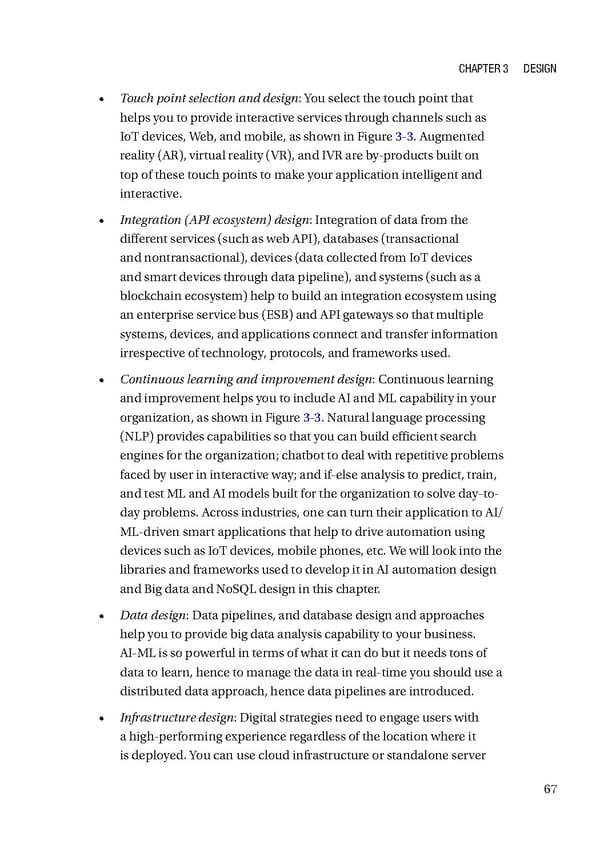Chapter 3 Design • Touch point selection and design: You select the touch point that helps you to provide interactive services through channels such as IoT devices, Web, and mobile, as shown in Figure 3-3. Augmented reality (AR), virtual reality (VR), and IVR are by-products built on top of these touch points to make your application intelligent and interactive. • Integration (API ecosystem) design: Integration of data from the different services (such as web API), databases (transactional and nontransactional), devices (data collected from IoT devices and smart devices through data pipeline), and systems (such as a blockchain ecosystem) help to build an integration ecosystem using an enterprise service bus (ESB) and API gateways so that multiple systems, devices, and applications connect and transfer information irrespective of technology, protocols, and frameworks used. • Continuous learning and improvement design: Continuous learning and improvement helps you to include AI and ML capability in your organization, as shown in Figure 3-3. Natural language processing (NLP) provides capabilities so that you can build efficient search engines for the organization; chatbot to deal with repetitive problems faced by user in interactive way; and if-else analysis to predict, train, and test ML and AI models built for the organization to solve day-to- day problems. Across industries, one can turn their application to AI/ ML-driven smart applications that help to drive automation using devices such as IoT devices, mobile phones, etc. We will look into the libraries and frameworks used to develop it in AI automation design and Big data and NoSQL design in this chapter. • Data design: Data pipelines, and database design and approaches help you to provide big data analysis capability to your business. AI-ML is so powerful in terms of what it can do but it needs tons of data to learn, hence to manage the data in real-time you should use a distributed data approach, hence data pipelines are introduced. • Infrastructure design: Digital strategies need to engage users with a high-performing experience regardless of the location where it is deployed. You can use cloud infrastructure or standalone server 67
 Building Digital Experience Platforms Page 86 Page 88
Building Digital Experience Platforms Page 86 Page 88